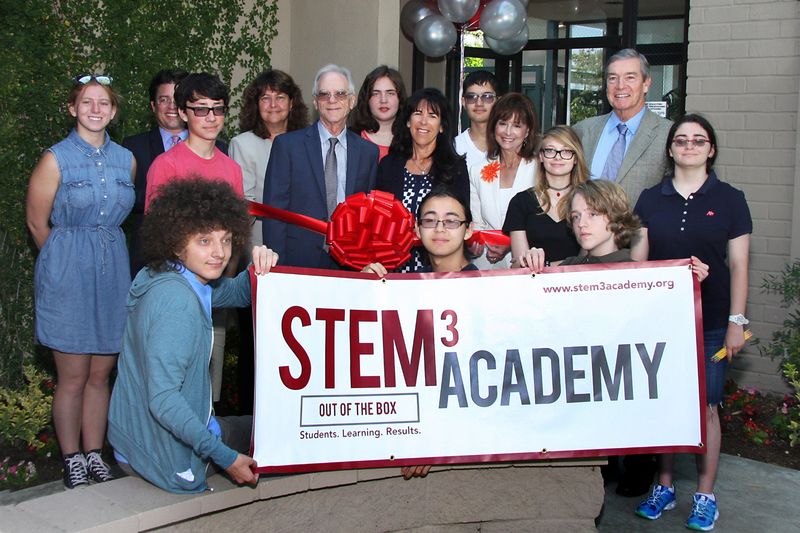New California high school aims to build science, technology, engineering and math skills of students on the autism spectrum.
By Krystal Ndoni
At STEM3 Academy in Valley Glen, California, it’s not unusual to see kids building robots, making fantastical 3D objects, and learning CAD. The difference here is that all of the students at this STEM-focused school are on the autism spectrum or have other learning or emotional difficulties. And they’re getting a head start on their careers.
“There seems to be a bias which presumes that because they have a special need, that somehow or another, they are less capable and we should demand less of them academically,” says Ellis Crasnow, head of school. “In fact, there are those particularly at the higher end of the autism spectrum who are extraordinarily capable.”
Ninety percent of adults with autism are either underemployed or unemployed—the highest percentage of any group with a disability—according to the Journal of the American Academy of Child & Adolescent Psychiatry. Yet young adults with autism choose STEM degrees in college at a higher rate than the national average—34 percent compared to 23 percent. Despite the interest, few actually go to college; students with autism have the third-lowest enrollment rate compared with all other groups with disabilities.
STEM3 Academy, which is located in a community of about 65,000 just outside of Los Angeles, aims to bridge the gap—leveraging the talents of autistic learners in STEM education. Founded by nonprofit The Help Group, the five-month-old school has 33 students in grades 9-12 from outlying Los Angeles districts. But word is getting out and interest in this specialized school is growing, both locally and nationally.
Preparing Students for College And Career Success
The demand for STEM jobs is high—with projected growth higher than the average of all other occupations, according to the Bureau of Labor Statistics.
Crasnow explains that while educators provided the emotional and social supports at school, it was industry that created the first programs to integrate autistic students into the workforce. Leaders like Microsoft, SAP (a German software company), and Freddie Mac have special programs to hire and train youth on the spectrum in specific fields.
Crasnow also cites Specialisterne, a Danish company where the majority of employees are on the spectrum. The founder—a computer engineer and father of an autistic son—realized that the hard skills he needed to debug code and do quality assurance on software were characteristic of his son.
At STEM3, students receive a well-rounded education that will be relevant to them in the marketplace; and the administration is working to build partnerships with colleges and industries to give students exposure—maybe even a foot in the door. The school is continually shaping existing partnerships with UCLA and local colleges to form various programs.
As for ties with industry, STEM3’s administration is aiming to create partnerships with both local and national companies that offer certification programs. The academy recognizes that students may want to build a career path not only via college but also to get work experience and certification—an increasing trend in the tech field.
A National Trend
The first of its kind in the nation, STEM3 Academy is an NPS, or non-public school, with costs covered by the district under FAPE (the Free Appropriate Public Education law). It contracts with more than 50 school districts in the Los Angeles area to place students with autism. Students can enroll in a dual program that allows them to take classes at both their home public high school and at the academy.
This January, STEM3 will open its door to its first middle schoolers, as it attracts more interest, even nationally, says Diane Flannery, senior director of design and strategy at The Help Group. The school is also considering adding elementary grades.
“We want to make sure there is a lot of interest from parents. And make sure that it is running as best as it can,” says Flannery. At only four months old, administrators don’t yet have the data to show the program’s effectiveness.
Still, that doesn’t stop callers from around the nation looking to set up a similar model.
Does Crasnow believe this can this become a national trend? “It is my fervent hope that it can,” he says. “I think it meets special needs head on.”
Reprinted from: Scholastic Education Pulse Blog

